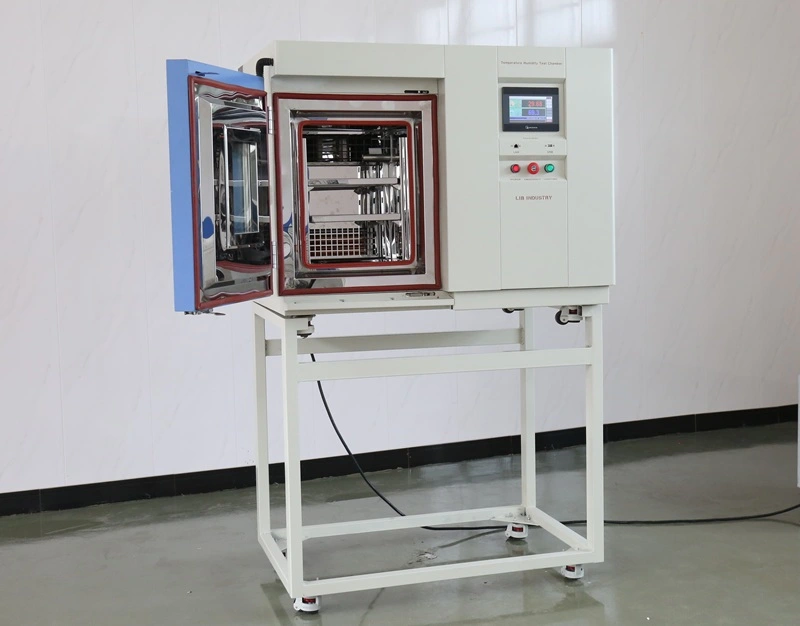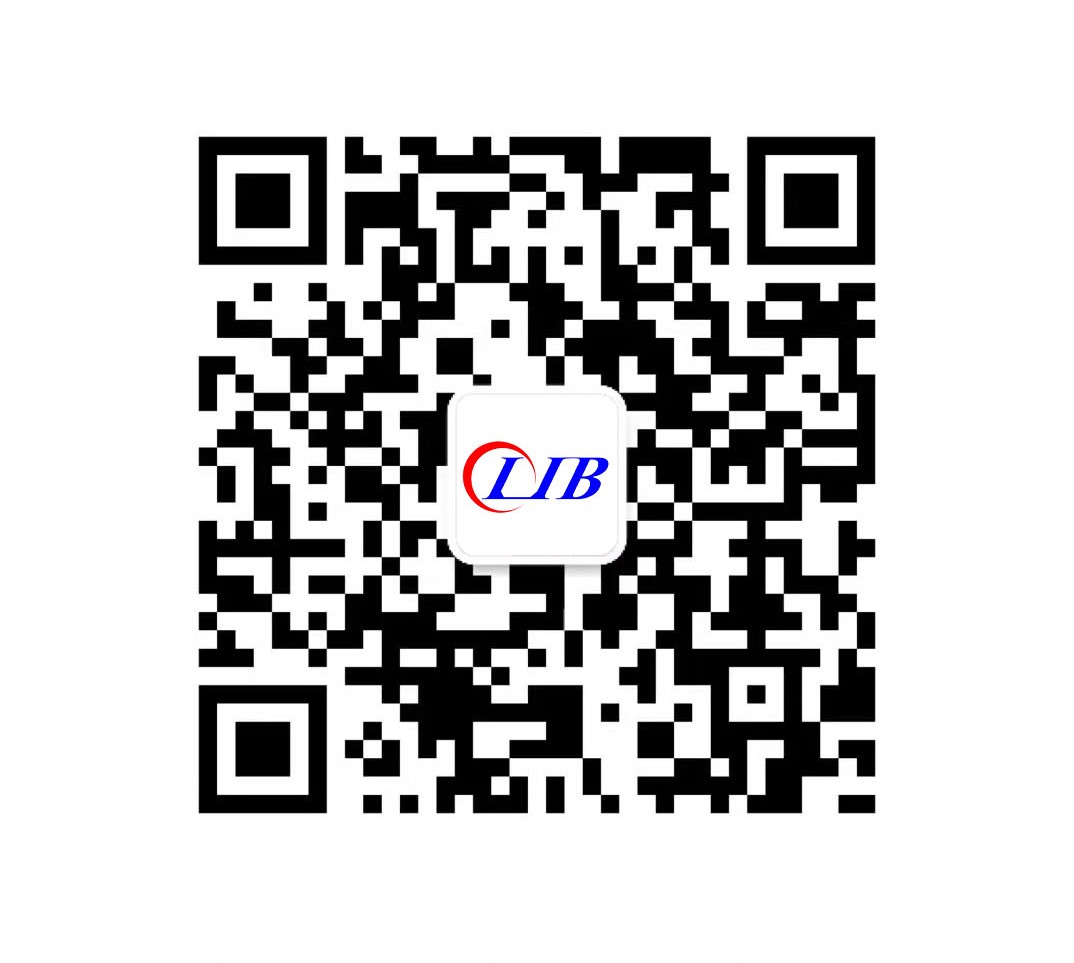How Temperature Calibration Chambers Ensure Measurement Accuracy?
How Temperature Calibration Chambers Ensure Measurement Accuracy?
Temperature calibration chambers maintain measurement accuracy through precise environmental control, using advanced refrigeration systems, platinum resistance sensors, and programmable controllers to create stable thermal conditions. These specialized enclosures eliminate temperature fluctuations and deviations, ensuring instruments undergo verification under reproducible conditions. By combining mechanical compression cooling, nichrome heating elements, and centrifugal circulation fans, calibration chambers achieve uniform thermal distribution across the testing volume. This controlled environment enables metrological traceability, reduces measurement uncertainty, and verifies sensor performance against known standards - ultimately safeguarding quality assurance protocols across industries where temperature-dependent processes demand absolute precision.

Why Temperature Calibration Is Essential for Reliable Measurements?
Preventing Measurement Drift in Critical Applications
Uncalibrated temperature sensors gradually lose accuracy over time due to thermal cycling, mechanical stress, and environmental exposure. This phenomenon, known as measurement drift, can compromise product quality in pharmaceutical manufacturing, aerospace testing, and electronics production. Regular verification using calibration chambers establishes baseline performance, identifying sensors that have drifted beyond acceptable tolerances before they impact production outcomes or safety protocols.
Establishing Metrological Traceability
Traceability connects measurement results to international standards through an unbroken chain of comparisons. Temperature calibration chambers serve as reference environments where secondary standards undergo verification against primary standards. This hierarchical system ensures that temperature measurements anywhere in the supply chain trace back to nationally recognized metrology institutes, satisfying regulatory requirements and quality management system audits.
Economic Impact of Measurement Errors
Temperature measurement failures cost industries millions annually through rejected batches, equipment damage, and warranty claims. A pharmaceutical manufacturer losing a single vaccine batch due to storage temperature deviation may face losses exceeding hundreds of thousands of dollars. Calibration chambers prevent these scenarios by validating monitoring equipment before deployment, reducing risk exposure and protecting revenue streams.
Principles of Operation in Temperature Calibration Chambers
Thermal Equilibrium and Stability Requirements
Achieving thermal equilibrium requires balancing heat input, removal, and distribution throughout the chamber volume. The system reaches stability when temperature variation falls within specified limits - typically ±0.5°C fluctuation and ±2.0°C deviation across the workspace. This stability depends on insulation effectiveness, air circulation patterns, and control system response time. Polyurethane foam combined with insulation cotton minimizes heat exchange with ambient conditions, while centrifugal fans maintain uniform temperature distribution.
Mechanical Compression Refrigeration Systems
Modern temperature calibration chambers employ cascade refrigeration or dual-stage compression to achieve extreme low temperatures. French TECUMSEH compressors use environmentally friendly refrigerants that undergo phase changes to absorb heat from the chamber interior. The refrigeration cycle includes compression, condensation, expansion, and evaporation stages, with each cycle extracting thermal energy. Cooling rates typically reach 3°C per minute, enabling rapid transitions between calibration points across temperature ranges spanning -70°C to +150°C.
Heating Element Configuration
Nichrome wire heating elements provide precise thermal energy input, offering rapid response times and excellent temperature uniformity. These resistive heaters convert electrical current into thermal energy with minimal overshoot, achieving heating rates around 1°C per minute. The controlled heating rate prevents thermal shock to test specimens while maintaining chamber stability. Strategic placement of heating elements throughout the chamber ensures even heat distribution, eliminating cold spots that could compromise calibration accuracy.
Factors Affecting Thermal Stability and Accuracy
Air Circulation and Stratification Control
Temperature stratification - where warmer air accumulates at upper levels while cooler air settles below - threatens measurement uniformity. Centrifugal wind fans create forced convection patterns that homogenize the thermal environment. Fan placement, blade design, and rotation speed all influence circulation effectiveness. Proper airflow prevents stagnant zones and ensures that sensors experience identical thermal conditions regardless of their position within the workspace.
Insulation Material Properties
Thermal insulation determines how effectively chambers maintain setpoint temperatures against ambient heat transfer. Materials with low thermal conductivity - such as polyurethane foam - create barriers that reduce energy consumption and improve temperature stability. Insulation thickness, joint sealing, and door gasket integrity all contribute to overall thermal performance. Double-layer thermostable silicone rubber seals on observation windows prevent heat leakage while allowing visual monitoring.
Sensor Response Time and Placement
PT-100 Class A platinum resistance thermometers detect temperature changes at 0.001-degree resolution, providing real-time feedback to control systems. Sensor placement near the geometric center of the workspace samples the most representative temperature, while additional sensors at corners verify uniformity. Response time - the interval required for sensors to register 63.2% of a step change - affects control loop performance and stability.
Parameter | Specification | Impact on Accuracy |
Temperature Fluctuation | ±0.5°C | Defines short-term stability and measurement repeatability |
Temperature Deviation | ±2.0°C | Indicates spatial uniformity across the entire workspace |
Cooling Rate | 3°C/min | Determines transition speed between calibration points |
Heating Rate | 1°C/min | Controls thermal shock and prevents overshoot conditions |
Sensor Resolution | 0.001°C | Establishes the finest detectable temperature change |
Role of Temperature Sensors and Control Systems
Platinum Resistance Thermometry Technology
PT-100 sensors exploit the predictable relationship between platinum resistance and temperature, offering exceptional linearity and long-term stability. The 100-ohm nominal resistance at 0°C increases approximately 0.385 ohms per degree Celsius. Class A sensors provide accuracy within ±0.15°C at 0°C, tightening tolerance requirements compared to Class B alternatives. This precision makes platinum resistance thermometers the preferred choice for calibration reference measurements.
Programmable Control Algorithms
Modern temperature calibration chambers' programmable color LCD touchscreen controllers implement proportional-integral-derivative (PID) algorithms that continuously adjust heating and cooling outputs. The proportional component responds to current error magnitude, the integral component addresses accumulated error over time, and the derivative component anticipates future trends. This three-part control strategy minimizes oscillation while maintaining tight setpoint adherence. Ethernet connectivity enables remote monitoring and data logging for compliance documentation.
Feedback Loop Optimization
Control system performance depends on proper tuning of gain parameters, update rates, and hysteresis bands. Aggressive tuning achieves rapid response but risks instability, while conservative tuning sacrifices speed for guaranteed stability. Optimal tuning balances these competing objectives, considering thermal mass, insulation properties, and refrigeration capacity. Well-optimized systems reach setpoint quickly without overshoot and maintain stability despite load changes.
Chamber Model | Internal Dimensions (mm) | Volume (L) | Temperature Range |
T-100 | 400×500×500 | 100 | -20°C to +150°C (A) / -40°C to +150°C (B) / -70°C to +150°C (C) |
T-225 | 500×600×750 | 225 | -20°C to +150°C (A) / -40°C to +150°C (B) / -70°C to +150°C (C) |
T-500 | 700×800×900 | 500 | -20°C to +150°C (A) / -40°C to +150°C (B) / -70°C to +150°C (C) |
T-800 | 800×1000×1000 | 800 | -20°C to +150°C (A) / -40°C to +150°C (B) / -70°C to +150°C (C) |
T-1000 | 1000×1000×1000 | 1000 | -20°C to +150°C (A) / -40°C to +150°C (B) / -70°C to +150°C (C) |
Improving Measurement Confidence Through Regular Chamber Calibration
Establishing Calibration Intervals
Calibration frequency depends on usage intensity, environmental conditions, and accuracy requirements. Laboratories performing daily measurements may require quarterly verification, while occasional users might extend intervals to annual cycles. Risk-based approaches consider the consequences of measurement failure, assigning shorter intervals to applications where errors have severe implications. Documentation of historical performance helps organizations optimize intervals, balancing cost against risk.
Documentation and Traceability Records
Comprehensive calibration certificates document reference standards used, environmental conditions, measurement results, and expanded uncertainty calculations. These records demonstrate compliance with ISO 17025 and industry-specific regulations. Certificate retention periods typically span five to ten years, supporting audits and investigations. Electronic record-keeping systems with secure timestamps and digital signatures prevent unauthorized modifications while improving accessibility.
Uncertainty Budget Development
Measurement uncertainty quantifies the doubt surrounding calibration results, encompassing contributions from reference standards, resolution limits, stability variations, and environmental influences. Uncertainty budgets combine these sources using statistical methods, expressing total uncertainty as a coverage interval with specified confidence level. Understanding uncertainty helps users determine whether measurement systems satisfy application requirements and identify opportunities for improvement.
Uncertainty Source | Typical Contribution | Mitigation Strategy |
Reference Standard | ±0.05°C to ±0.15°C | Use higher-accuracy standards with valid certificates |
Chamber Stability | ±0.25°C to ±0.5°C | Improve insulation and optimize control algorithms |
Sensor Resolution | ±0.001°C | Select high-resolution instrumentation |
Loading Effects | ±0.1°C to ±0.3°C | Minimize thermal mass and allow equilibration time |
Spatial Uniformity | ±1.0°C to ±2.0°C | Enhance air circulation and verify uniformity mapping |
LIB Industry Temperature Calibration Chamber: Guaranteed Precision Performance
Advanced Safety Features for Battery Testing
LIB temperature calibration chambers incorporate specialized safety options designed for lithium-ion battery testing, addressing fire and explosion risks inherent in electrochemical energy storage devices. Over-temperature protection activates emergency cooling when chamber temperature exceeds safe limits. Over-current protection prevents electrical system damage during fault conditions. Refrigerant high-pressure protection safeguards compressors from destructive pressure buildup. Earth leakage protection detects insulation failures that could create electrocution hazards. These interlocking safety systems enable confident testing of potentially hazardous materials.
Customizable Temperature Ranges
Three distinct temperature range configurations accommodate diverse calibration requirements. Range A (-20°C to +150°C) suits most commercial and industrial applications. Range B (-40°C to +150°C) addresses cold storage verification and automotive testing. Range C (-70°C to +150°C) supports aerospace, cryogenic research, and extreme environment simulation. This flexibility eliminates the need for multiple chambers, reducing capital investment and laboratory footprint while maintaining capability breadth.
Comprehensive Turn-Key Solutions
LIB Industry provides complete environmental testing solutions encompassing research, design, manufacturing, commissioning, delivery, installation, and operator training. This integrated approach ensures chambers arrive properly configured, validated, and ready for immediate use. Technical support continues post-installation, with calibration services, preventive maintenance programs, and application assistance available throughout equipment lifecycle.
Conclusion
Temperature calibration chambers form the cornerstone of reliable measurement systems across industries demanding thermal accuracy. Through precise control mechanisms, stable thermal environments, and traceable verification processes, these specialized instruments eliminate measurement uncertainty that could compromise product quality or safety. Investment in quality calibration equipment, combined with proper maintenance and documentation practices, delivers long-term returns through reduced errors, enhanced regulatory compliance, and improved customer confidence in measurement results.
FAQs
What temperature range do calibration chambers typically cover?
Professional calibration chambers offer ranges from -70°C to +150°C, accommodating most industrial verification requirements. Configuration options include -20°C to +150°C for standard applications, -40°C to +150°C for cold environment testing, and -70°C to +150°C for extreme condition simulation. Selection depends on the operating range of instruments requiring calibration.
How often should temperature calibration chambers undergo verification?
Verification frequency depends on usage intensity and accuracy requirements, typically ranging from quarterly to annual intervals. High-utilization laboratories performing critical measurements may require more frequent verification, while occasional users can extend intervals. Risk-based approaches consider consequences of measurement failures when establishing schedules that balance cost against quality assurance needs.
What factors influence temperature uniformity within calibration chambers?
Uniformity depends on insulation quality, air circulation effectiveness, chamber loading, and thermal stabilization time. Centrifugal fans create forced convection that homogenizes temperature throughout the workspace. Proper sensor placement verifies spatial consistency. Loading test specimens alters thermal mass and disrupts airflow patterns, necessitating adequate equilibration periods before measurements commence to ensure accuracy.
LIB Industry stands as a leading temperature calibration chamber manufacturer and supplier, delivering turn-key environmental testing solutions worldwide. Our chambers guarantee measurement accuracy through proven technology and comprehensive support services. Contact our team at ellen@lib-industry.com to explore how our calibration chambers can elevate your quality assurance protocols.



